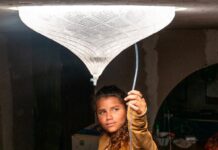
From the Netherlands comes the story of a man who realized we might delay the effects of climate change using the same method that Dutch landowners utilize every year to make ice skating rinks.
These so-called “IJsmeesters” or Ice Masters, pump water onto the surface of meadows and allow it to freeze overnight. They continue this process until the surface is thick enough to skate on.
One such IJsmeester wondered if you could do the same on the Arctic Ocean to preserve sea ice through until winter, and Arctic Reflections was born.
Fonger Ypma, the nonprofit’s chief executive, was interviewed about this crazy idea by the Guardian last year, and crazy though it may sound, Ypma actually got the project off the ground, and recently celebrated the completion of advanced field testing in the frozen Canadian sub-Arctic.
“The Arctic acts as a sort of mirror or heat shield for the Earth and a substantial part of global warming comes from the Earth’s surface becoming darker,” Ypma said last year.
“And so I thought: isn’t there some way to maintain that ice sheet for a bit longer until CO2 levels come down and the ice becomes regenerative? I had this naive idea: why not pump water on top of it?”
Looking around through published research, Ypma realized the “naive” idea had already been explored by scientists, confirming at least to his mind, that it wasn’t all that crazy.
The most substantial research was conducted in 2016, and it was a little pie-in-the-sky; with author S.J. Desch suggesting that while it was feasible to pump seawater on top of the Arctic sea ice to allow it to freeze, humanity would need “millions” of pumping stations to accomplish this.
Adapting that “seminal” work, Ypma and his team at Arctic Reflections have come up with a much better strategy: let the ocean do the work for you.
His new concept involves using the pumping method to create ice at specific locations around the Arctic Ocean and then transporting it into the Arctic waters by existing ocean currents. This, he says, will be able to save 100,000 square kilometers of sea ice every year from melting with somewhere between 100 and 1,000 pumping stations, rather than millions.
OTHER WILD IDEAS: ‘Mating Glaciers’ High up in Pakistan’s Mountains Could Yield Climate Change Gamechanger
Over the winter of 2024-25, Artic Reflections conducted its second round of field tests for their pumping capabilities on the icy coast of Newfoundland, having run similar tests in Svalbard the year before.
Challenges exist with the method, however, as water that’s pumped onto a layer of snow can freeze, but only if it remains exposed to the air and wind. If, as strange as it may sound at first, another layer of snow falls on the pumped up water, it becomes insulated at liquid temperatures.
MORE DUTCH CHANGEMAKERS: A Team of Maverick Engineers Want to Roll the Geological Clock Back on Sinai and Replace Desert with Lush Greenery
The tests conducted in Newfoundland involve much larger water pumps, and now focus will shift onto tracking reflectivity and thickness of the ice remotely, as well as interpreting temperature data, and drone camera footage.
The Guardian spoke with the leaders of other projects doing the same thing, and the general consensus is that the craziness of the whole endeavor is only matched by the urgency with which they believe something must be done to address sea ice loss.
SHARE This Naive And Crazy (And Plausible) Idea To Save The Arctic…




















